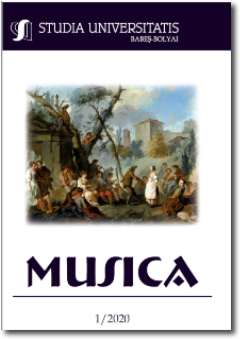ASPECTS RESULTING FROM THE ANALYSIS OF THE TONE ROW USED IN DE PROFUNDIS BY ARNOLD SCHOENBERG
ASPECTS RESULTING FROM THE ANALYSIS OF THE TONE ROW USED IN DE PROFUNDIS BY ARNOLD SCHOENBERG
Author(s): Alexandra BelibouSubject(s): Music
Published by: Studia Universitatis Babes-Bolyai
Keywords: twelve – tone technique; tone row; atonality; all-combinatorial hexachords; Arnold Schoenberg;
Summary/Abstract: This article presents the tone row used by Arnold Schoenberg in the choral work De Profundis, written in twelve – tone technique, in two hypostases: as a grouping of all-combinatorial hexachords (rare quality leading to a deliberate symmetry in the transformation of the note row) and as the sum of two interval dyads (complementary or antithetical). The composer’s choices regarding the notes used in the series emphasize a permanent pendulum between the concept of tension and relaxation, between gravitational sound systems (with interval resolutions) and non-gravitational ones. These aspects convince us of the musical maturity at which Schoenberg arrived in his last compositional period, in which he chose to express himself without exclusively choosing one language (tonal or atonal).
Journal: Studia Universitatis Babes-Bolyai - Musica
- Issue Year: 65/2020
- Issue No: 1
- Page Range: 195-202
- Page Count: 8
- Language: English

